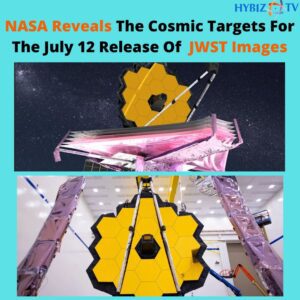NASA Explains Cosmic Targets For The James Webb Space Telescope’s First Images:
The European Space Agency, the Canadian Space Agency, and the National Aeronautics and Space Administration (NASA) will collaborate to share some of the most in-depth images of the cosmos ever taken. The James Webb Space Telescope was used to capture the photos that will shortly be made available by the three agencies. NASA has released a list of the first cosmic targets whose photographs will be released in advance of the images’ release, which will officially launch the JWST’s scientific observations.
When was JWST Launch:
Representatives from NASA, ESA, CSA, and the Space Telescope Science Institute selected the list of targets and photos. The photographs will be posted on the website of NASA, its social media accounts, and other accounts. The photographs will be released by NASA for the first time during a live broadcast on Tuesday at 10:30am EDT (8pm IST).
After six months of remotely unfolding different parts, aligning the telescope’s mirrors, and calibrating instruments, the space agency will release the photos and spectroscopic data from the newly operational observatory.


According to Reuters, the first set of photographs, which took weeks to assemble from raw telescope data, is expected to provide viewers an absorbing sneak peek at what Webb will capture on the next science missions. With the aid of Webb’s equipment, it is also possible to study planets that are much closer to Earth, such as Mars and Saturn’s ice moon Titan, as well as a significant number of newly identified plants that orbit far-off stars.
NASA revealed on Sunday that US President Joe Biden will present an undefined photograph from the collection on Monday night at a White House meeting with NASA Administrator Bill Nelson.
First Images From The JWST:
The Carina Nebula is a bright and dark nebula located in the southern Carina constellation’s Carina-Sagittarius Arm, 7,600 light-years from Earth. It contains some of the largest and most powerful stars in our galaxy, as well as some of the brightest stars, including WR 25, HD 93129A, and Eta Carinae.
WASP-96 b (spectrum) is an exoplanet that is 1,150 light-years away from the Earth and is a gas giant. The exoplanet, which has about half the mass of Jupiter, revolves around its star in 3.4 Earth days. It has a clear surface and shines brightly from sodium signatures despite being a gas giant.














